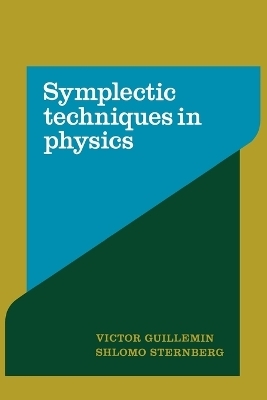
Symplectic Techniques in Physics
Seiten
1990
Cambridge University Press (Verlag)
978-0-521-38990-7 (ISBN)
Cambridge University Press (Verlag)
978-0-521-38990-7 (ISBN)
Symplectic geometry is very useful for formulating clearly and concisely problems in classical physics and also for understanding the link between classical problems and their quantum counterparts. From a different approach, this subject is of interest to both mathematicians and physicists.
Symplectic geometry is very useful for clearly and concisely formulating problems in classical physics and also for understanding the link between classical problems and their quantum counterparts. It is thus a subject of interest to both mathematicians and physicists, though they have approached the subject from different view points. This is the first book that attempts to reconcile these approaches. The authors use the uncluttered, coordinate-free approach to symplectic geometry and classical mechanics that has been developed by mathematicians over the course of the last thirty years, but at the same time apply the apparatus to a great number of concrete problems. In the first chapter, the authors provide an elementary introduction to symplectic geometry and explain the key concepts and results in a way accessible to physicists and mathematicians. The remainder of the book is devoted to the detailed analysis and study of the ideas discussed in Chapter 1. Some of the themes emphasized in the book include the pivotal role of completely integrable systems, the importance of symmetries, analogies between classical dynamics and optics, the importance of symplectic tools in classical variational theory, symplectic features of classical field theories, and the principle of general covariance. This work can be used as a textbook for graduate courses, but the depth of coverage and the wealth of information and application means that it will be of continuing interest to, and of lasting significance for mathematicians and mathematically minded physicists.
Symplectic geometry is very useful for clearly and concisely formulating problems in classical physics and also for understanding the link between classical problems and their quantum counterparts. It is thus a subject of interest to both mathematicians and physicists, though they have approached the subject from different view points. This is the first book that attempts to reconcile these approaches. The authors use the uncluttered, coordinate-free approach to symplectic geometry and classical mechanics that has been developed by mathematicians over the course of the last thirty years, but at the same time apply the apparatus to a great number of concrete problems. In the first chapter, the authors provide an elementary introduction to symplectic geometry and explain the key concepts and results in a way accessible to physicists and mathematicians. The remainder of the book is devoted to the detailed analysis and study of the ideas discussed in Chapter 1. Some of the themes emphasized in the book include the pivotal role of completely integrable systems, the importance of symmetries, analogies between classical dynamics and optics, the importance of symplectic tools in classical variational theory, symplectic features of classical field theories, and the principle of general covariance. This work can be used as a textbook for graduate courses, but the depth of coverage and the wealth of information and application means that it will be of continuing interest to, and of lasting significance for mathematicians and mathematically minded physicists.
Preface; 1. Introduction; 2. The geometry of the moment map; 3. Motion in a Yang-Mills field and the principle of general covariance; 4. Complete integrability; 5. Contractions of symplectic homogeneous spaces; References; Index.
| Erscheint lt. Verlag | 25.5.1990 |
|---|---|
| Verlagsort | Cambridge |
| Sprache | englisch |
| Maße | 152 x 228 mm |
| Gewicht | 648 g |
| Themenwelt | Mathematik / Informatik ► Mathematik ► Analysis |
| Naturwissenschaften ► Physik / Astronomie | |
| ISBN-10 | 0-521-38990-9 / 0521389909 |
| ISBN-13 | 978-0-521-38990-7 / 9780521389907 |
| Zustand | Neuware |
| Haben Sie eine Frage zum Produkt? |
Mehr entdecken
aus dem Bereich
aus dem Bereich
Band 5: Hydraulik, Stromfadentheorie, Wellentheorie, Gasdynamik
Buch | Softcover (2024)
De Gruyter Oldenbourg (Verlag)
59,95 €


